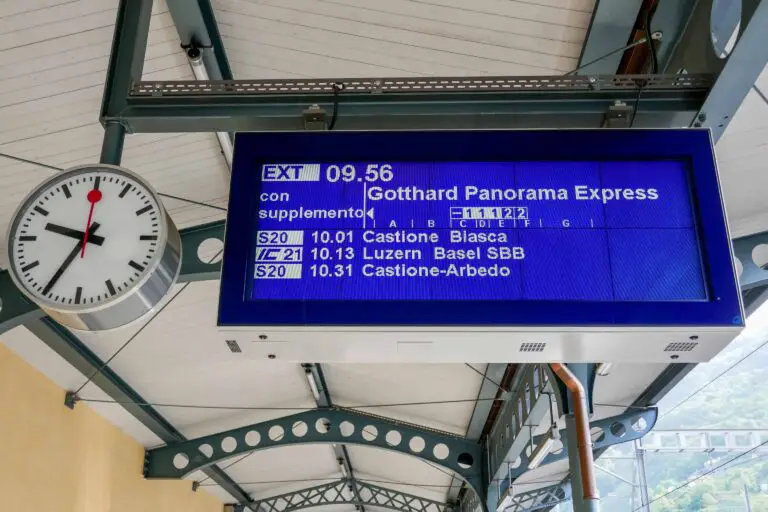Which train passes do others buy?
These are the train passes for Switzerland that most travelers prefer:
| Popularity | Pass |
|---|---|
| 38% | Swiss Travel Pass |
| 4% | Swiss Travel Pass Flex |
| 40% | Swiss Half Fare Card |
| 17% | A regional pass |
| 1% | Eurail or Interrail Pass |
Downloads to help you pick your pass
Find your rail pass, option 1: use our rail pass finder
How to use our rail pass finder
Please find our complete overview of rail passes here. You can filter on the main features of each rail pass. For example, you can select:
- the regions and towns that should be included;
- how long the pass should be valid;
- the season you’ll be traveling in;
- whether you prefer ticketless traveling.
In which cases to use the rail pass finder
I recommend this tool if:
- you have a good idea of your overall itinerary, with or without a detailed day-by-day plan;
- you can’t or won’t make detailed calculations;
- the main features of the pass are more important to you than its exact savings.
Find your rail pass, option 2: use our quick overview
How to use the quick comparison sheet
Please download our free rail pass overview document above. It shows the main features of Swiss rail passes. This helps you decide which passes suit your travel plans, and which don’t.
In which cases to use our overview
I advise consulting the overview if:
- your Switzerland itinerary isn’t set in stone, or;
- you can’t or won’t make detailed calculations, or;
- the convenience of a pass is more important to you than the exact savings.
Find your rail pass, option 3: calculate with our Excel spreadsheet
How to use the calculation sheet
To make your own calculations, please download our free calculation spreadsheet above. Then follow the 5-step instructions. The steps are explained below, and also in the spreadsheet.
If you are not familiar with Excel, you can use a notepad to calculate manually.
In which cases you should make calculations
Making the effort to calculate your options isn’t always necessary. But if you want to be sure of the outcome, there’s no way around this. I also advise using the Excel if:
- you have a fixed itinerary and can list each and every trip you plan to make, and;
- you have the time to do some research, and;
- price is your main priority.
Our sample calculation
The Excel sheet contains a sample trip. All prices and rail pass savings are up-to-date. The sample shows how the sheet works. Remove it before you enter your own travel plans, passes and prices.
Step 1: Make a list of travel plans
Why it matters to list all of your plans
This step is important, as you can only pick the cheapest pass if you have a detailed idea about all your travels. If you leave out trips, even short ones, the outcome won’t be 100% reliable. So make a list of all trips you intend to make and include:
- transfers from the airport or Swiss border to the (first) town where you stay, and back;
- all of your day trips, including buses, boats, cable cars, trams, museums, et cetera;
- town-to-town transfers, if you stay in multiple towns.
In reality, you can’t assume all of your plans to be realized, for example because:
- the weather may force you to make changes, or;
- you may discover other nice day trips while you’re in Switzerland, or;
- you have more or less energy than expected.
However, your list should be a realistic overview of the kind of traveling you intend to do. If in practice you replace one mountain trip with the other, that mostly doesn’t result in a big difference in travel expenses.
What if you don’t have detailed plans?
If you don’t have an itinerary yet, Annika gladly explains how to make one.
If you have no idea about your travel plans and just plan by the day, it won’t be possible to calculate which pass will be the cheapest. In that case, you can skip the other steps. Just use our rail pass finder or download our quick overview.
Step 2: Find prices of regular tickets
Now you’ll check what your traveling would cost without a pass. For each of the trips on your list, consult the timetable to find the ticket price.
Be sure to take the full (regular) price from the timetable, not the half-fare price or other reduced rates. Read the instructions on the timetable page.
To simplify things, I recommend getting the prices for one adult only. Children travel along for free or for a fixed flat rate in almost all cases.
Step 3: Select a few passes to compare
It’s not necessary, nor realistic, to compare the regular prices to all available rail passes. If you use the rail pass finder, or download our quick overview, you’ll quickly see which ones do and don’t make sense for your holiday.
For example:
- If you travel all across Switzerland, it’s usually easier and cheaper to pick one country-wide pass, rather than a combination of regional passes.
- If you’ll be traveling in one region only, you can eliminate regional passes for other areas.
- If you plan to travel a lot, or if you don’t want to buy tickets for each trip, the Swiss Travel Pass makes sense.
Fill out the prices of the selected rail passes. You can find them in the price sections of each rail pass page.
Step 4: Find the discounts for pass holders
You now have a list of trips (step 1) and the costs of each trip without a pass (step 2). For the first selected pass (step 3), find out what discount you would get for each trip.
Here’s how:
- Visit the relevant pass page (e.g. the Swiss Travel Pass page).
- Download the rail network map, and check where the pass is valid. You can also browse the lists of covered activities on each rail pass page.
- If the pass grants free traveling for a trip or activity, enter a 100% discount. If the pass does not provide a discount, enter 0%, et cetera.
- The discounted price will automatically be calculated. You don’t have to calculate and enter it yourself.
- Repeat this for the other passes you selected in step 3.
The total amount you’d spend with each rail pass option will automatically be calculated and displayed at the bottom of each rail pass column.
Step 5: Select a pass
Now you know which pass results in the lowest overall travel expenses. Tips:
- Sometimes the difference between two passes is minimal. In that case, I advise picking the one that includes unlimited traveling. That’s more comfortable as you don’t need to buy tickets for each trip, and you can change your plans without paying extra.
- Take into account that some passes include free museum entrance, so you may be able to save more than just the travel costs.
- If you’re struggling with the details of your calculations, just pick a pass that seems to be a good overall fit. You’ll nearly always save money with any of the passes that are a reasonable match.
- If very little traveling is involved, you may find that regular tickets are the cheaper option.
Still unsure? Feel free to ask for help in our community!
More information to help you decide

All tickets and passes

